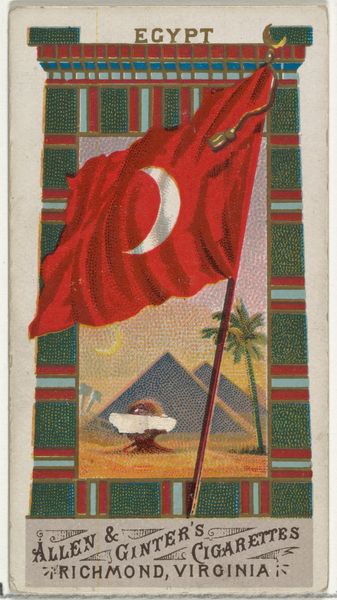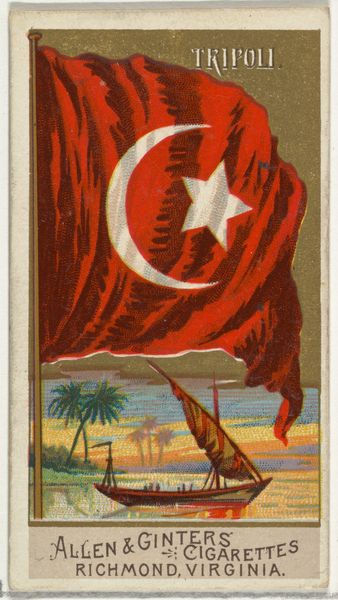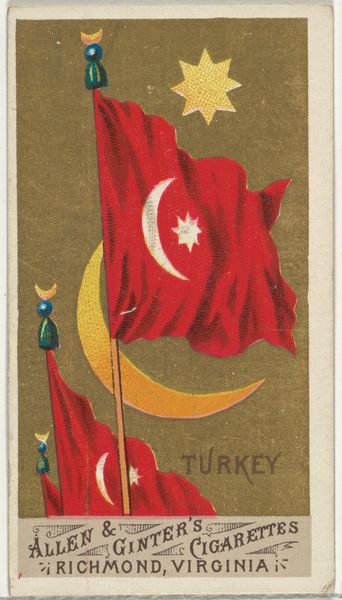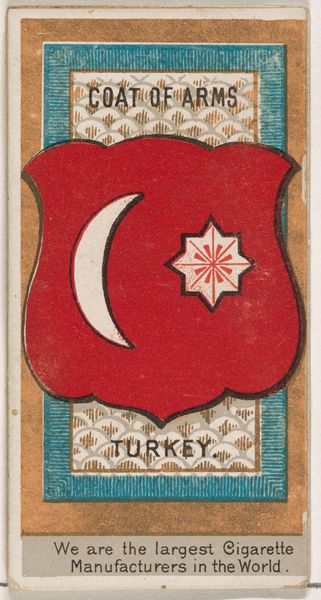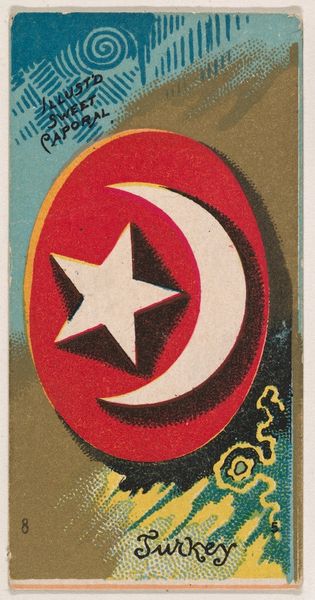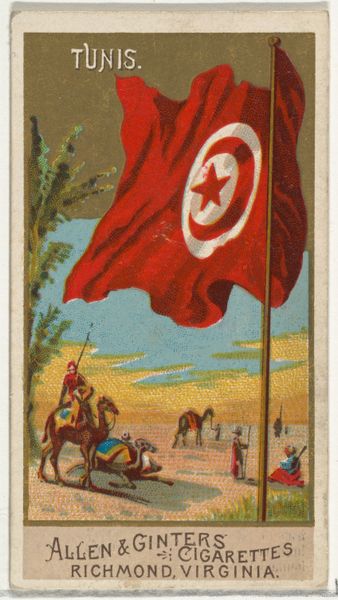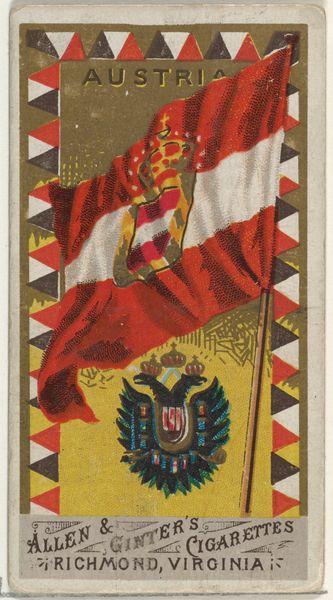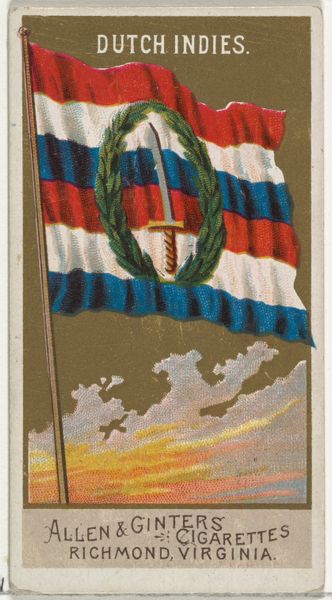
Egypt, from Flags of All Nations, Series 1 (N9) for Allen & Ginter Cigarettes Brands 1887
0:00
0:00
Dimensions: Sheet: 2 3/4 x 1 1/2 in. (7 x 3.8 cm)
Copyright: Public Domain
Curator: What a striking little artifact. This is a trade card titled "Egypt, from Flags of All Nations, Series 1 (N9)" made in 1887 by Allen & Ginter. The medium includes drawing and print, and the vibrant use of watercolors definitely catches the eye. Editor: It does. I'm immediately struck by its composite nature. There's a dreamlike, almost surreal quality, from the somewhat awkwardly placed pyramids and palm trees to the dark face emerging from the sands—framed, of course, by that dominant red flag and the ornate border. It's a heady mix. Curator: The flag itself is the former flag of Ottoman Empire, heavy with meaning; the crescent moon and star symbolize sovereignty, guidance, and divine protection in the Islamic world. Its presence evokes Ottoman power, and, coupled with the pyramids, conflates ancient and more modern forms of rule. Editor: So the symbolism gestures towards power structures. Interesting. To my eye, the method of production seems important here too. These cards were mass-produced; how does the commodification inherent in a cigarette card interact with the depiction of such an ancient, culturally loaded place as Egypt? It’s quite a disjunction. Curator: It’s fascinating, isn't it? The orientalist lens, combined with the commercial nature, makes it a multilayered cultural artifact. It speaks to how images were consumed and circulated at the time, building and reinforcing ideas about the world. The head is especially evocative, and clearly exoticized in its presentation; race and representation are unavoidable aspects of this trade card's significance. Editor: I agree. Think of the labour involved in producing hundreds, thousands of these. Each one a tiny rectangle traveling from the factory, to the shop, to a smoker's pocket— ultimately shaping a material, and dare I say ideological, connection between Richmond, Virginia, and an imagined Egypt. What was this “Egypt” intended to conjure in the consumer’s mind? Curator: Likely a space of both romance and dominion. Allen & Ginter would've used it as both an attractive trinket and signifier, tying smoking to power and exploration in an almost propagandistic fashion. These objects tell complex stories. Editor: Yes. I initially saw this as just a pretty picture, but thinking about the methods and the social context gives the card a darker resonance. It really opens it up to questions about labor and consumerism during the late 19th century.
Comments
No comments
Be the first to comment and join the conversation on the ultimate creative platform.
